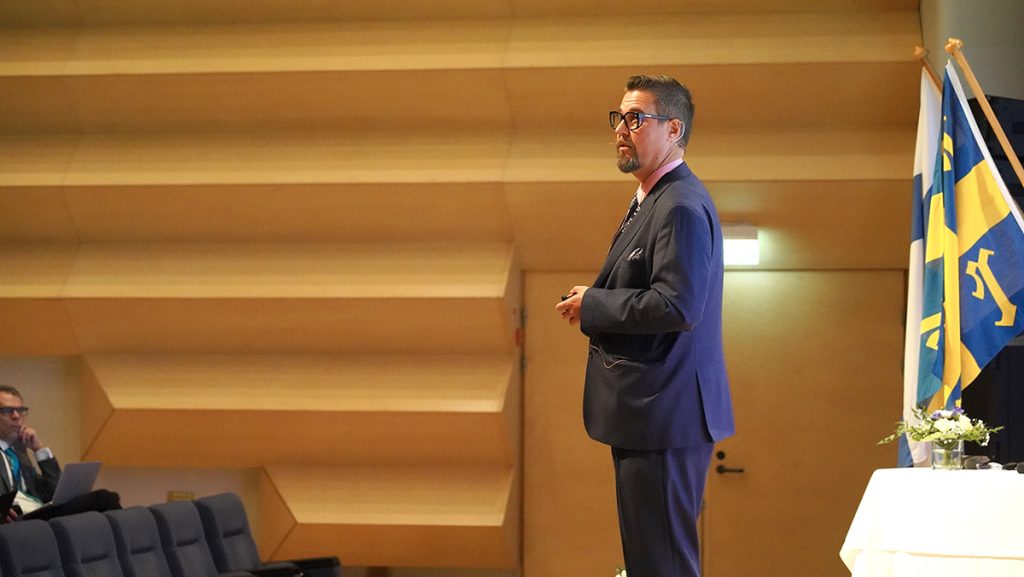The seafarer of the future
The seafarer of the future – what is in store? This is a question that Master Mariner Janne Lahtinen, lecturer at Satakunta University of Applied Sciences (SAMK), considered at the SAMK Intelligent Shipping Symposium, held on 3rd November 2021.
Text: Tytti Wallenius, Kumppania | Photo: Minna Keinänen-Toivola

We might imagine a seafaring professional as a tattooed sea dog who has seen every corner of the world, confident at the helm. True, seamen and women of today may well brave an anchor tattoo on their arm, but the image we have of them could be slightly out of date.
– A seafarer’s duties have not changed greatly, but they have developed. It is not yet possible to guide a ship from port remotely, but digitalisation is already present in maritime, thanks for example to the advances made in navigation, Lahtinen explains.
Digitalisation is not an absolute value
Despite these advances, there remain within maritime many challenging decision-making processes that rely on the data supplied by many different sources - from weather forecasts to GPS positioning device data. The sociological side of the industry and the fast-developing work environment present additional challenges.
– Digital technology will be a tool, not an end in itself. It will serve to assist seafarers in their work and assist the whole industry in achieving the aims of the future, Lahtinen emphasises.
The automation of maritime brings savings in time and money, while enhancing safety. Development does not happen all at once, however: automation is approached one step at a time. For example, we still have a long way to go before we can attain remote piloting, and it is not yet possible to steer vessels along the smart fairways without the crew.
– Maritime is still based on the crew making observations on the environment, which gives an understanding of the whole picture. The crew can then anticipate what comes next, make their choices, and finally navigate the ship in the right direction. Technology and data act to support this process, Lahtinen sums up.
Testing is key for development
Developing technology and maritime automation requires testing and bold ideas. ISTLAB is there to act as the test environment for smart maritime applications, also enabling those maritime applications to be tested, which would be too costly or risky to carry out on an actual vessel.
For instance ISTLAB allows us to test different weather conditions without having to wait for an actual storm or calm weather.
– ISTLAB also allows the safe testing of remote piloting, says Lahtinen.
So what would seafaring of the future look like? We can scarcely imagine the seafaring professional operating a vessel and its functions remotely from port, least of all from the sitting room sofa. This is not yet the case, but with the development of technology, the vision can become a reality.
ISTLAB in-brief
The aim of the project is to create a smart joint-use Intelligent Shipping Technology test Laboratory (ISTLAB), which will merge and consolidate the navigation simulator of Satakunta University of Applied Sciences, the Finnish Transport and Communications Agency’s bathymetric model of the Rauma deep-water fairway, Finnish Transport Infrastructure Agency’s smart buoy and sea current monitoring, the Finnish Geospatial Research Institute’s navigation system research and the Finnish Meteorological Institute’s survey of wave, sea level and ice conditions. The technology group Wärtsilä has delivered a navigation simulator and specific mathematical models.
SHARE ARTICLE
Subscribe for Maritime newsbulletin!
Do you want current information about Satakunta University of Applied Sciences' maritime projects, research and education?
